
How to read your residential electric bill
Your energy bill has been updated with easier-to-read features. Explore the new look and learn more about each section of your bill.
On this page:
What you’ll see on every bill
Your printed electric bill now features full-color energy history graphs and a blue box around the key information in the upper right corner. Regardless of your price plan, the following sections and information will always be on your bill.
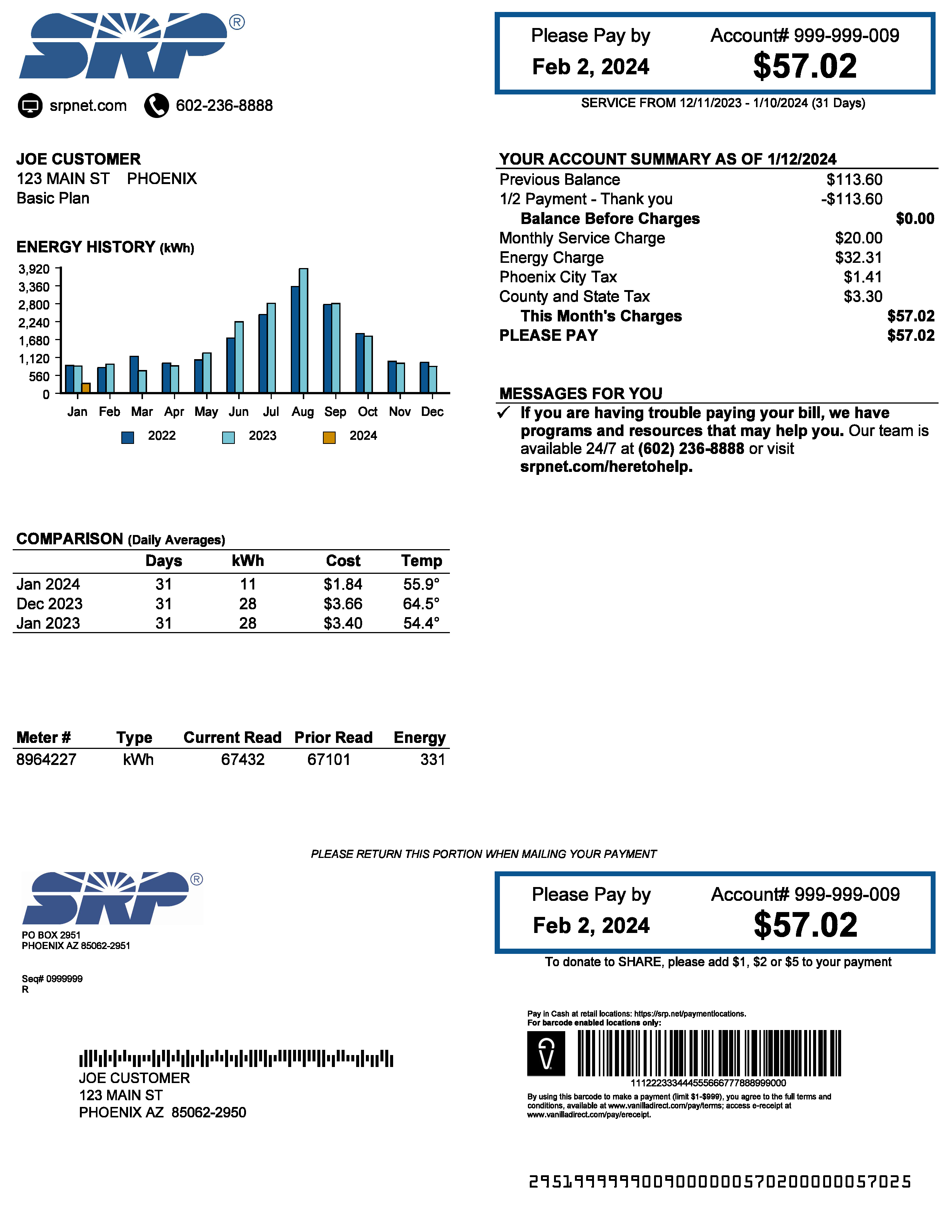

If you have questions, please call us at the telephone number listed here on your electric bill.

Your service period in addition to the due date, the amount you currently owe and your account number in an easier-to-read format. You can keep the top part of the bill for your records. Or, try our free eBill service. If you go paperless, you’ll receive your bill electronically and be able to view up to three years of past bills online.
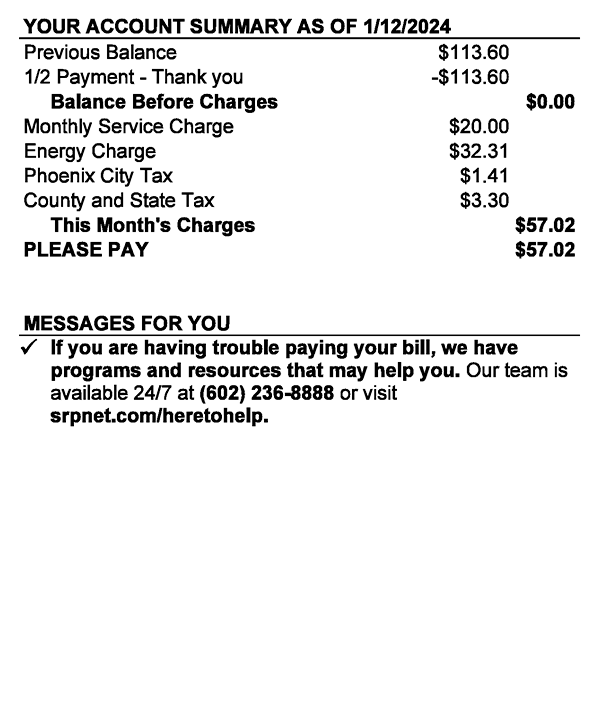
The charges for the current month, including discounts, previous charges, payments and current balance due, are listed here. Local and state taxes are also shown.

More information about your current bill, your account and SRP options and programs that can benefit you. If you participate in a time-of-day plan, your savings will be shown here.

The amount due and due date in an easy-to-read format. If you mail your payment, you should include your bill stub. You can also use the information on your bill stub to pay your bill in cash at a retail location.
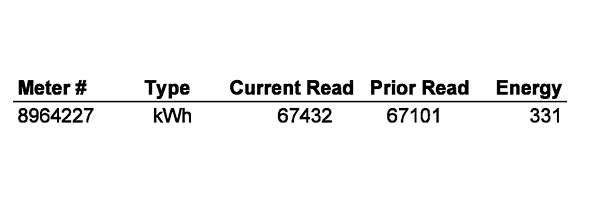
This section lists the total energy in kilowatt-hours (kWh) used for the billing period and the current and prior month's meter readings. If you participate in a plan that has Demand (kW) charges, the maximum On Peak demand for the billing period will display.

A table with the number of billing period days, daily usage (in kWh), daily costs and average daily temperatures for the current, last and same billing month last year.
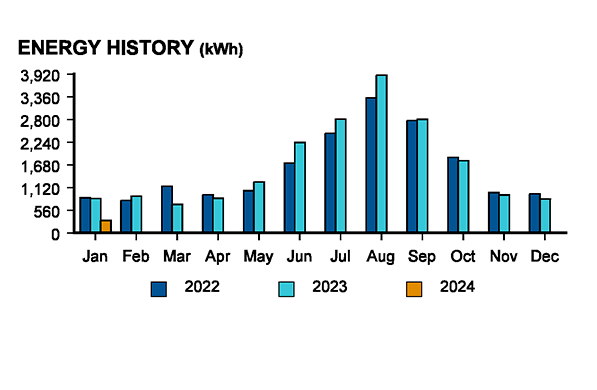
The energy bar graph displays up to 36 months of usage (kWh) history. If you participate in a plan that has demand (kW) charges, an additional graph with 36 months of demand history will also be shown.

Your service address and rate plan. The plan noted is the price plan used to calculate your bill.
Get familiar with these terms
Here are some of the terms you’ll see on your bill:
- Monthly service charge: This fixed monthly charge covers the cost of SRP billing, collections, metering, customer services and distribution facilities.
- Energy (kWh) charge: This is a variable charge that covers the cost of buying or producing the electricity used during the billing service period. It also covers the cost of supplying necessary transmission, generation and distribution capacity to meet customers’ needs. The actual charge to individual customers will vary month to month according to the amount of energy consumed.
- Demand (kW): This is a measure of the maximum rate at which electricity was used during the billing period. Demand is measured in kW.
- Demand (kW) charge: This charge covers some of the costs of supplying transmission and distribution capacity to meet your energy demand. The transmission system includes the towers and high-voltage lines that transmit electricity from power plants to the distribution system. The distribution system includes the lower-voltage power lines and poles (or underground power lines) and transformers that connect your service to the transmission system. The charge you pay will vary month to month based on the demand your account has placed on the system.
Reading a Customer Generation or Average Demand price plan bill
If you participate in one of SRP's demand-based solar price plans (our Customer Generation or Average Demand price plan), these charges are specific to your electric bill.
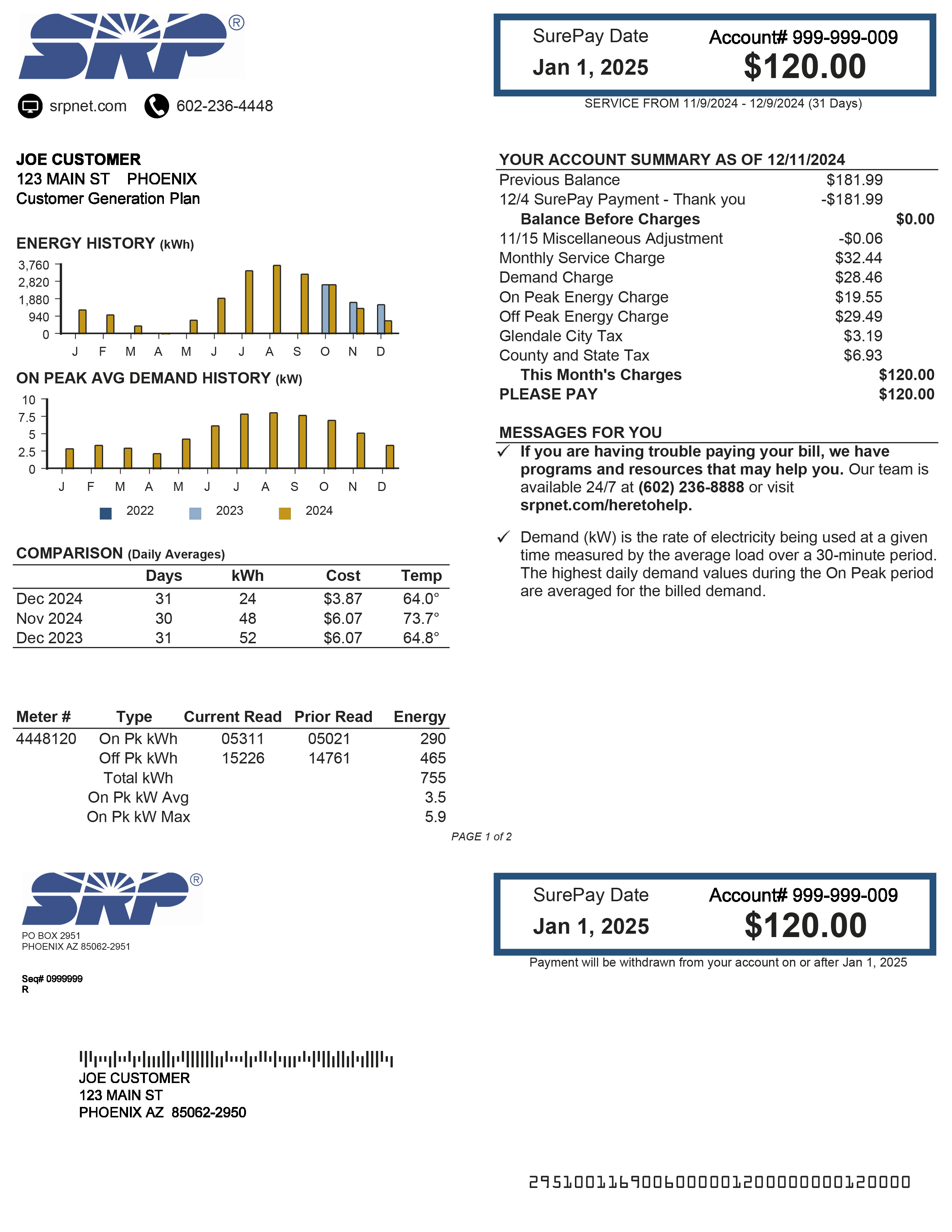

If you have questions, please call us at the telephone number listed here on your electric bill.

Your service period in addition to the due date, the amount you currently owe and your account number in an easier-to-read format. You can keep the top part of the bill for your records. Or, try our free eBill service. If you go paperless, you’ll receive your bill electronically and be able to view up to three years of past bills online.
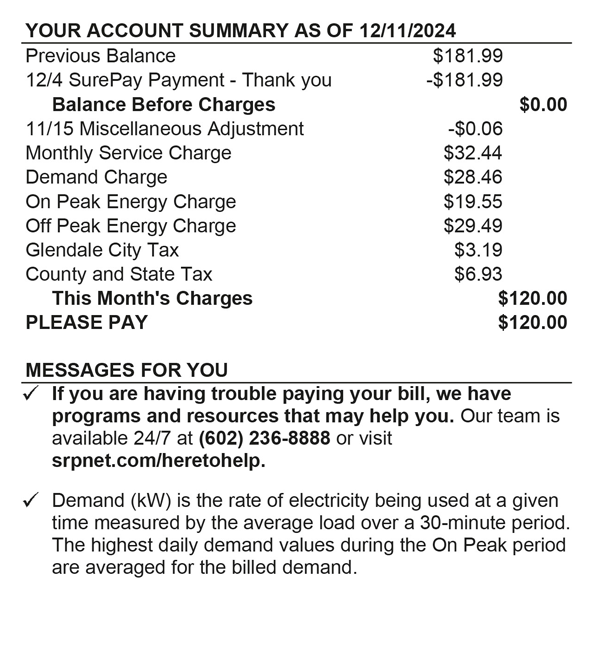
The charges for the current month, including discounts, previous charges, payments and current balance due, are listed here. Local and state taxes are also shown.
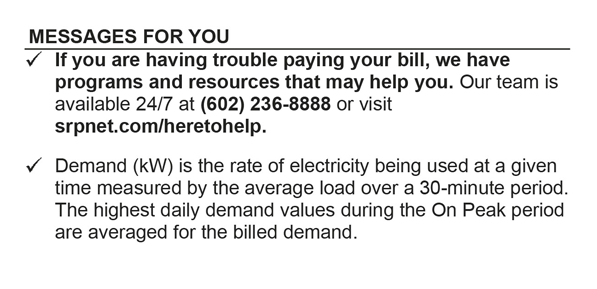
Information about your current bill, your account and SRP options and programs that can benefit you. If you participate in a time-of-day plan, your savings will be shown here.
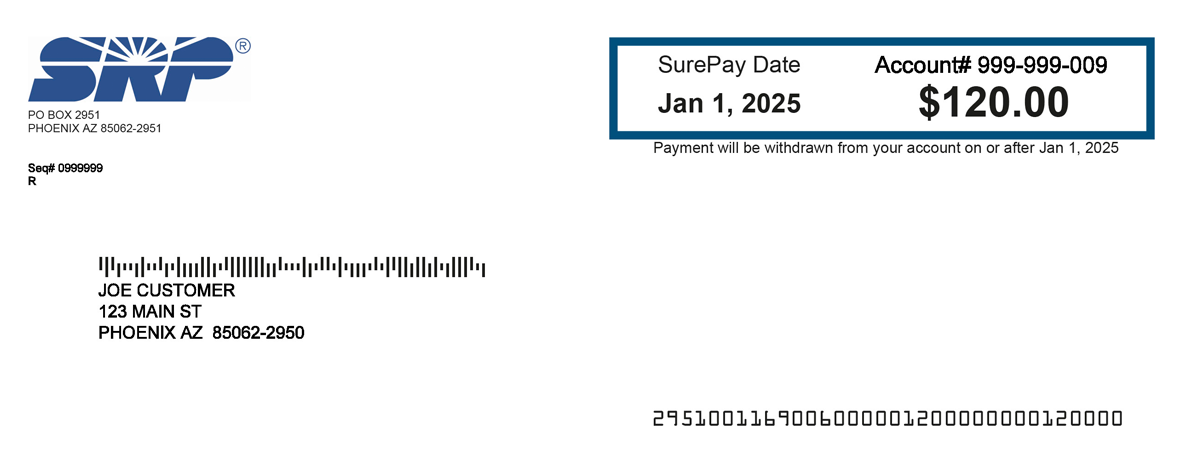
The amount due and due date in an easy-to-read format. If you mail your payment, you should include your bill stub. You can also use the information on your bill stub to pay your bill in cash at a retail location.
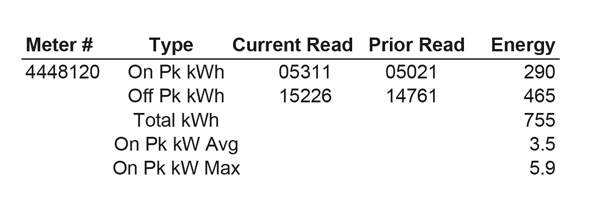
This section lists the total energy in kWh used for the billing period and the current and prior month's meter readings. Customer Generation Price Plan customers: The "On-Peak kW Max" is your maximum energy demand for the billing period, which is used to calculate the demand charge. Average Demand Price Plan customers: The "On-Peak kW Avg" shows the average of your daily maximum on-peak energy demand readings for the billing period, which is used to calculate the demand charge. The "On-Peak kW Max" will also be displayed for your reference.

This section features a table that compares the number of billing period days, daily average usage (in kWh), daily average costs and average daily temperatures for the current billing month, last billing moth and the same billing month last year.
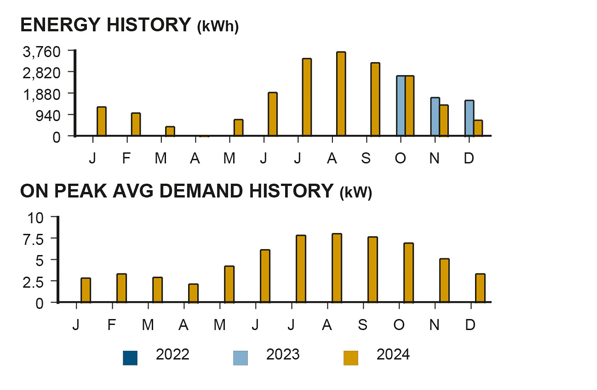
This bar graph displays up to 36 months of on-peak demand usage in kW. Demand is a measure of the maximum rate at which electricity is being used in your home during on-peak hours. Customers on the Customer Generation Price Plan will see up to 36 months of on-peak maximum demand history; customers on the Average Demand Price Plan will see up to 36 months of on-peak average demand history.

Your service address and rate plan. The plan noted is the price plan used to calculate your bill.
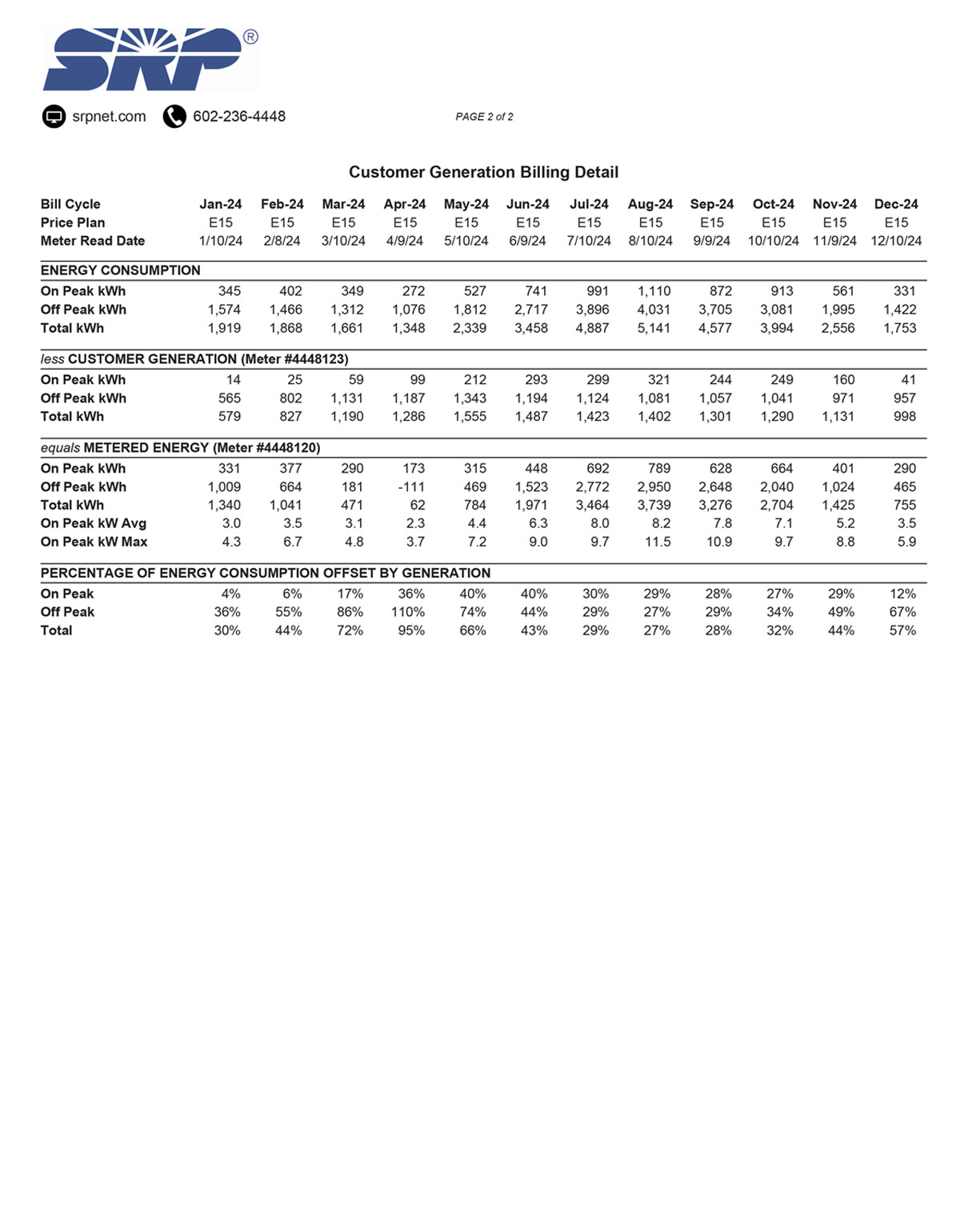

This section shows the current calendar year of energy consumption broken down by month in kWh. Usage includes the energy you generated plus SRP energy.
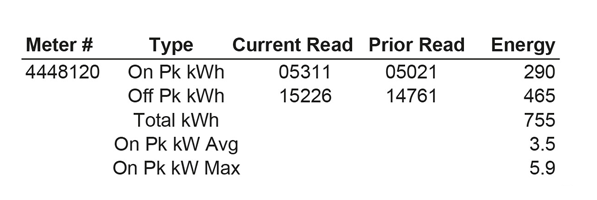
This section shows the energy you produced during on-peak and off-peak hours.

This section shows the energy that you purchased from SRP or sold to SRP during on-peak and off-peak hours. Negative numbers show the amount of kWh sold to SRP. The On-Peak kW Max is the maximum demand that occurred during on-peak hours. Average Demand customers will also see the On Peak kW Avg totals in this section, which is the average of your daily maximum on-peak energy demand readings for the billing period.

This section shows the percentage of your energy that was supplied by your system. If you produced more energy than you used, then the percentage will exceed 100%, which indicates SRP purchased excess energy.
Need help reading your bill? Call (602) 236-8888(602) 236-8888 anytime or send us an email.
Reading a Time-of-Use Export or Electric Vehicle Export price plan bill
If you're a solar customer on SRP's Time-of-Use Export or Electric Vehicle Export price plans, these charges are specific to your electricity bill.
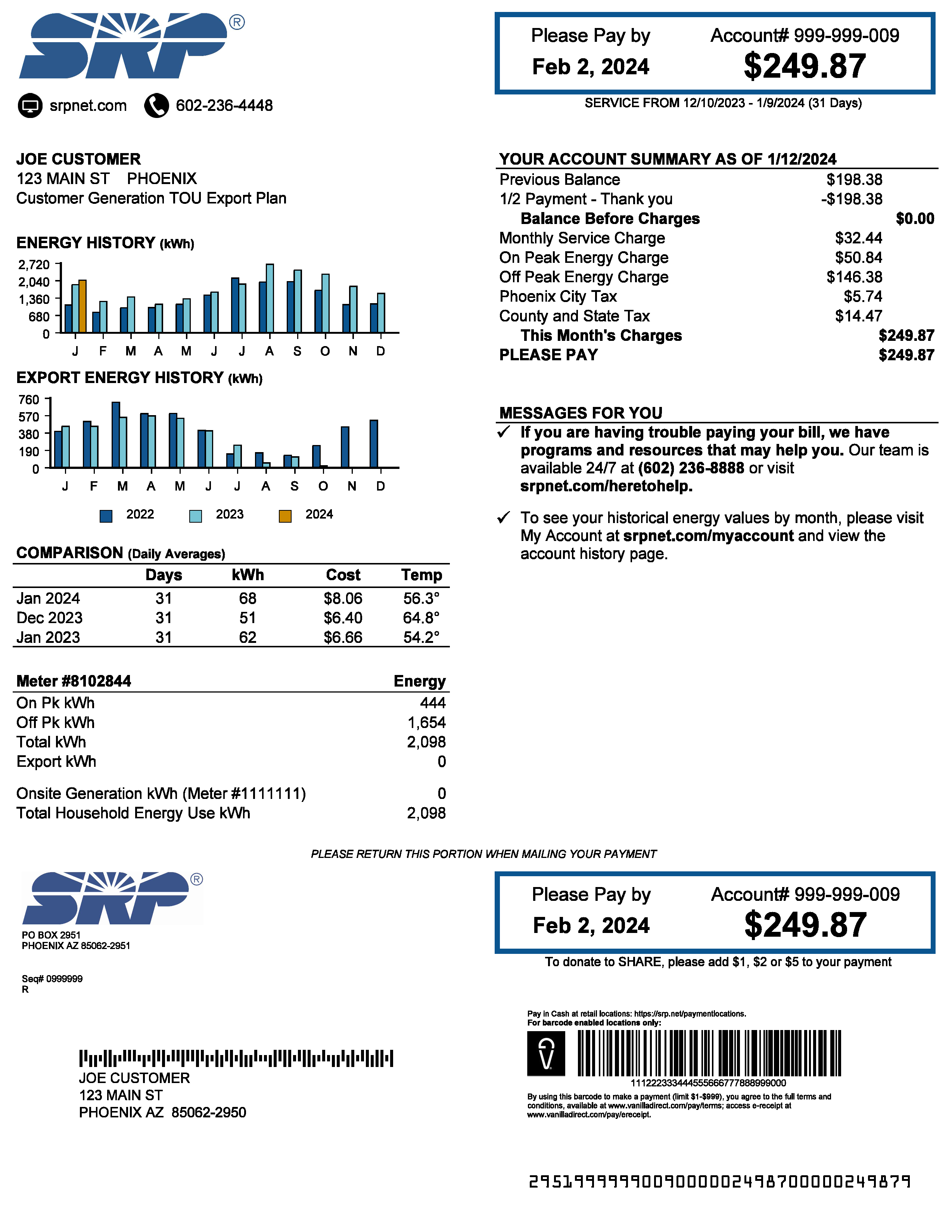

If you have questions, please call us at the telephone number listed here on your electric bill.

Your service period in addition to the due date, the amount you currently owe and your account number in an easier-to-read format. You can keep the top part of the bill for your records. Or, try our free eBill service. If you go paperless, you’ll receive your bill electronically and be able to view up to three years of past bills online.
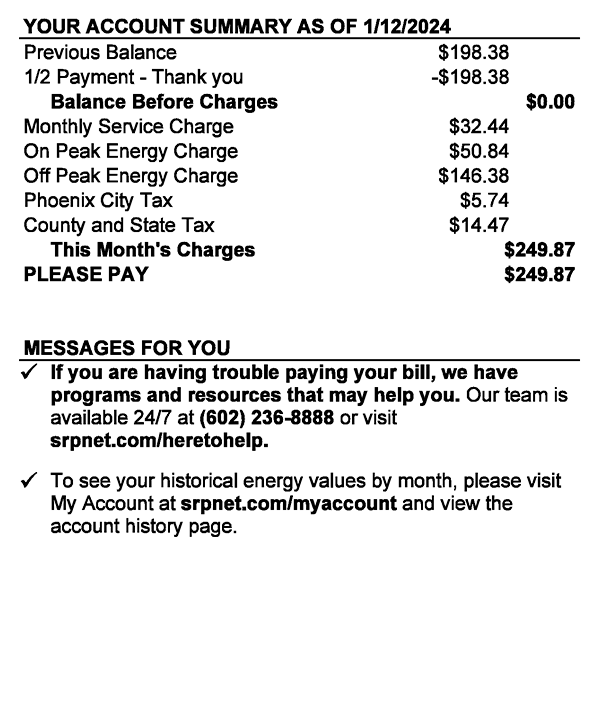
The charges for the current month, including discounts, previous charges, payments and current balance due, are listed here. Local and state taxes are also shown.

Information about your current bill, your account and SRP options and programs that can benefit you. If you participate in a time-of-day plan, your savings will be shown here.
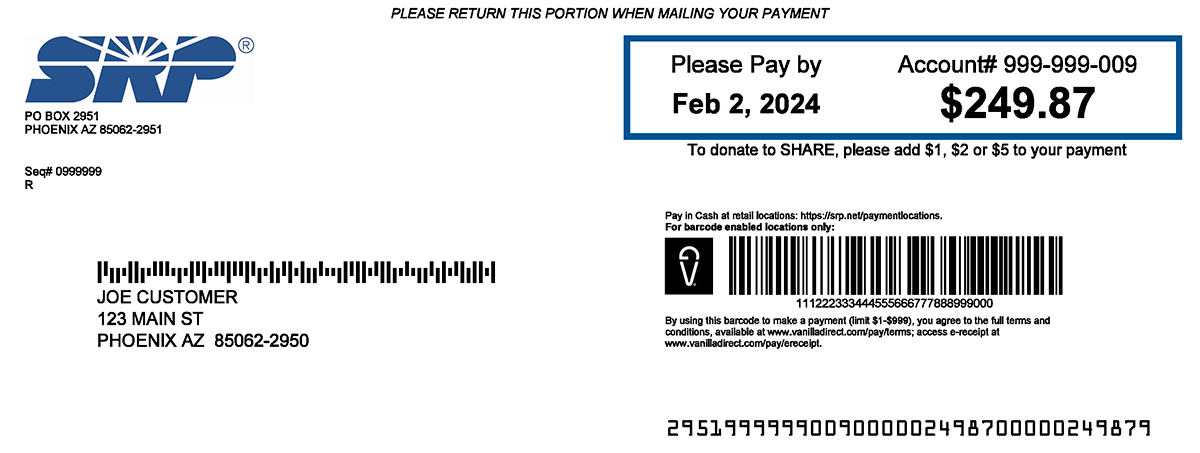
The amount due and due date in an easy-to-read format. If you mail your payment, you should include your bill stub. You can also use the information on your bill stub to pay your bill in cash at a retail location.
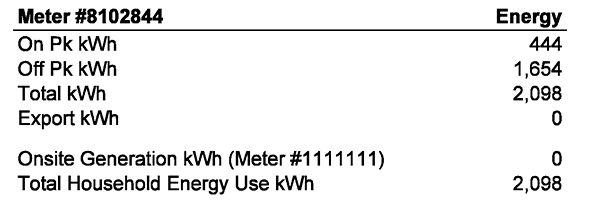
This section lists the total energy in kWh delivered by SRP during the billing period. The energy you exported to the grid will also be shown, along with your on-site generation, which is the energy generated from your rooftop system. The total household energy use in kilowatt-hours (kWh) is your on-site generation from your rooftop system minus your export kWh plus energy delivered by SRP.

A table with the number of billing period days, daily usage (in kWh), daily costs and average daily temperatures for the current, last and same billing month last year.
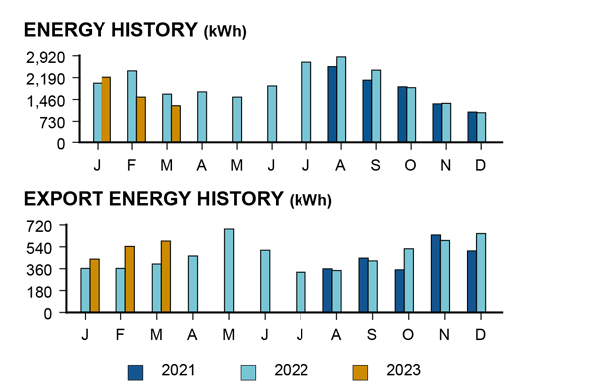
This bar graph shows up to 36 months of export kWh. Export kWh is the kWh of energy from your rooftop system that was not used by your home.

Your service address and rate plan. The plan noted is the price plan used to calculate your bill.
Get familiar with these terms
Here are some of the terms that you’ll see on your bill:
- Export kWh: Energy in kilowatt-hours (kWh) from a rooftop system not used in the home and provided to the grid. The credit for the energy from the rooftop system is shown as an export credit based on the kWh.
- On-site generation: This is the measure of energy in kilowatt-hours (kWh) generated from the customer's rooftop system.
- Total household energy use: The total on-site generation from the rooftop system minus energy exported to the grid plus energy delivered by SRP.


